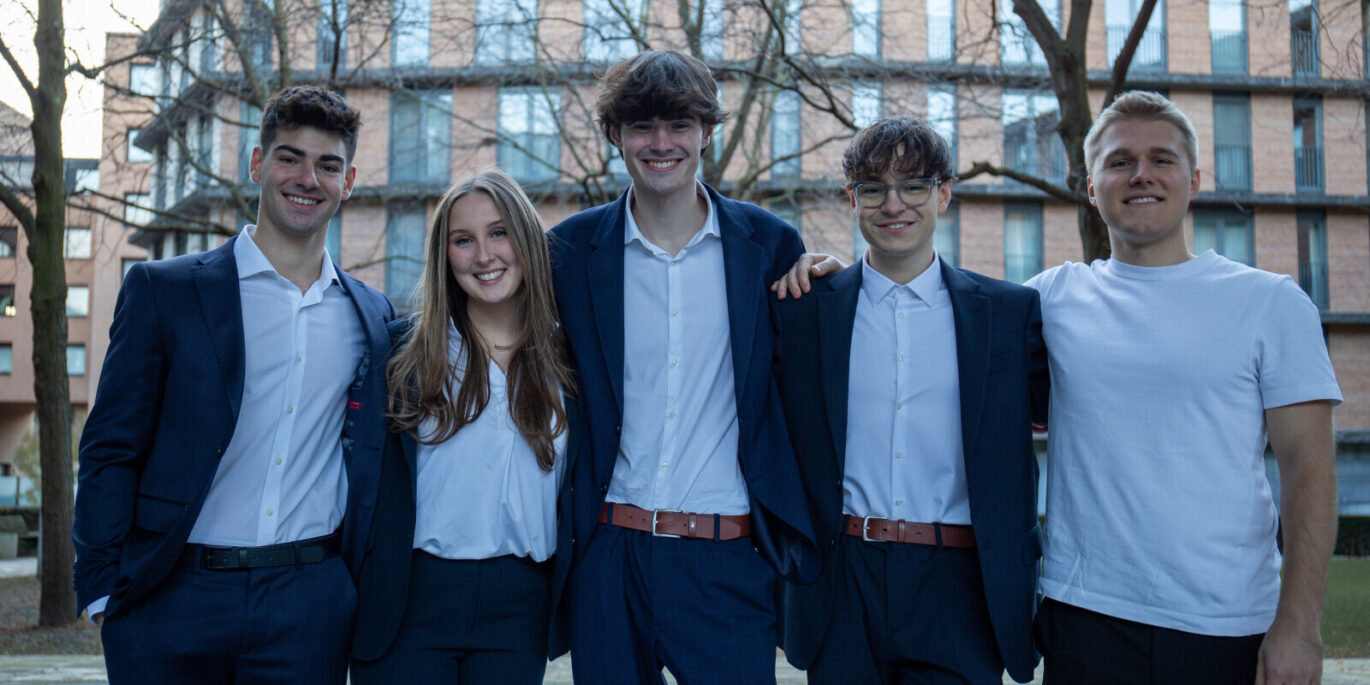One of the questions we get asked a lot is about whether what’s going on in your SU is reflected in other places.
And it’s a question that comes up a lot during and after (sabbatical) election season.
Easter is almost here, and with only about 20 university SU elections left to complete (some this/next week and a handful after Easter), we have some headlines. As ever, health warning here – we’re going on manual totting, the remaining results could tip things a bit and not everyone has published results data.
But like the news channels do in a US Presidential election, there’s enough data on some issues out there for us to “call it”.
The headlines from this year are, as ever, fascinating. Overall, for example, the number of women winners looks like it’s up substantially, and close to its high in 2021.
The sector also seems to have got past the past few years’ struggle of attracting substantial numbers of candidates – with a substantially lower number of unions reporting single candidate or no candidate positions at close of noms.
The prolonged student anxiety crisis and the impacts of Covid – to the extent to which they were impacting “putting yourself out there” – do appear to be easing off.
Our provisional tally also suggests that while a fairly normal number of incumbent officers decided to re-stand, a fairly standard percentage of those restanding didn’t get back in (about 1 in 5, although those that get re-elected are more likely to have only been standing against RON).
What is very clear (and to be celebrated) is that SUs have elected a remarkably ethnically diverse group of student leaders – largely thanks to the rise of International PGT candidates and winners. We appear to be on course for around 35-40 per cent per cent of all sabbs elected this year are international students.
We are a few weeks away from being able to put proper numbers on the above – there’s still some intel gathering to be done – but we are fairly confident about the trend lines. And later this spring, we’ll do this year’s manifesto analysis.
And one other trend that we’re confident is manifesting around the UK is another notable rise in the number of international PGT candidates and winners.
Turnout and tactics
It’s often a percentage figure on the KPI sheet that gets reported to the board, and is important in demonstrating legitimacy of those who will represent the student body.
But we are definitely not going to call any trends – especially by percentage – in turnout.
Some SUs have modest increases, and some have had record breaking years – and they’ve tended to be loud about it. And, naturally, vice versa.
The key issue this year is that where turnout looked to be falling in recent years as many SUs added thousands of members via the PGT surge, now in some cases turnout percentages don’t look quite as impressive given what we know anecdotally about international recruitment collapse in the September and January intakes of many universities.
When student numbers are changing so dramatically, raw turnout targets are almost certainly not ideal – a more refined look at turnout both by student characteristics and involvement profile looks like it would make more sense.
There’s also no discernable trends in what we might call “turnout tactics”. Some unions have moved towards direct incentivisation, but just as many have moved away from that and moved towards giving bigger budgets to candidates to drive turnout. It’s one of the many debates about what constitutes “fairness” that we looked at on the site a while ago.
There are also, by the way, no particular trends around slates or complaints – with SUs moving in both available directions on the former, and either deleting lots of rules or introducing new ones on the latter. Timing hasn’t changed much either – although the handful of experiments involving a (much) earlier election do appear to have boosted participation.
Fewer sabbs
The other factor this year that is making a YOY comparison very difficult is the reduction in the number of full-time officers across a whole range of SUs.
In some cases this is a cost-cutting measure; in others it’s been driven by a democracy review and in some cases, a reduction in FTOs has been accompanied by an increase in paid part-time roles.
It’s also long been the case that while some SUs just elect the sabbs in the Spring period, some combine the exercise with the election of PTOs, student trustees, faculty based posts and in some cases all the elections for clubs and societies.
But overall, the number of posts available looks to be down about 10-15% sector wide – which when measured against the evident demand for what amounts to a graduate opportunity, especially amongst international PGTs, may be causing a crunch.
It certainly points to a need for universities and SUs to work on improving the range of leadership and/or post-study work options that are connected to the student experience around the university.
Size and shape
We’ve been talking on the main site for the past couple of years about the dramatic rise in the number of international PGT students now being recruited into UK higher education.
In some cases the change has been really very pronounced and quite rapid – with concerns raised about the infrastructure and capacity required to properly support the students being attracted to the UK.
What’s interesting about that is that previous increases in international students did not tend to feed through into substantial electoral participation – at least not in terms of sabbatical candidates or sabbatical winners.
As we noted last year, this wave is different. A number of SUs told us last year that where pre-pandemic they might have struggled to attract a single international or PGT student to stand, now such students feature prominently on candidate lists, and in some cases dominate winner’s photos.
And that trend has continued this year. At least 30 SUs have elected all international teams, and another clutch of about 30 unions have elected majority international teams.
Given that much of the talk over the years has suggested that both international students and PGT students are somehow “hard to reach”, this is great news.
It should mean that SUs will become – necessarily if we look at the student numbers profiles of many student bodies – more internationally focussed and more focussed around PGT students and their needs.
It is a trend that is causing some concern, however – especially in universities. Where they expect pretty much “only” the sabbs to represent students on university-wide committees, there are often worries that only having international students in the main leadership positions will make inputting on, say, access and participation strategy a challenge.
There are also concerns that home domiciled student participation is on the wane – and that the strength of social capital encompassed in some of the big international societies is causing home domiciled students to lose faith that they can win.
We’ve talked before about the way in which both candidates and even winners tend to be drawn from what we might call “confidence pools” – where the theory is that those with the highest levels of belonging (home domiciled undergrads) are bound to have dominated elections in the past.
That suggests that economies of scale and “bonding” social capital within large international societies/communities are carrying more international/PGT students both to the starting line and the winner’s podium than ever before.
This also means that there are concerns that the winners of elections – more often now PGTs – may not focus on domestic issues such as maintenance loan reform, and may be less experienced in the SU in general than the “career” hacks that built their confidence over time in the past.
And even where SUs are much more relaxed about the electorate’s choice(s), the ethnic disparities between majority BAME sabb teams and majority white staff teams are starting to cause concern.
Problems and solutions
Of course if you believe that the student body has the right to collectively choose its student leaders, to the extent to which you think some of the above issues are “problems”, fixes are available – in training, support and in some cases perhaps broadening the range of those who represent students at university level, as well as broadening SU staff roles (with particular reference to graduate posts, student staff and sponsored skilled workers).
If nothing else, both in the past when sabb teams were dominated by home domiciled white students and now that many are dominated by international BAME PGT students, it reminds us that democratic structures that are overly focussed on choosing leaders rather that capturing and acting on the range of student concerns present in a large student body are unlikely to succeed either way.
There’s nothing wrong with international students representing home students – the reverse has happened for years – but this might be a good opportunity to press home how daft it is that we ask sabbs (especially those with an Education portfolio) to spend quite so much time in committees in general rather than drawing on a broader range of student talent.
As we’ve noted before on the site, models around Europe suggest much wider distribution of such opportunities around far more student leaders.
And as well as all of that, some of the complexities that surround immigration and visas – especially for those whose academic year doesn’t match the traditional September to Summer cycle – will be new to many SUs and their universities’ international teams. There’s an explainer on the site – do get in touch if some of that is posing a headache or raising questions.
Building community and connection
Beyond the usual questions of putting things in place to make the year ahead a success, one thing that the trend lines do indicate is an increasing set of questions that challenge the conception of community on campus. We talked about these on the site this time last year – but they bear repeating.
The model is as follows. Universities and their student bodies are single communities, where students are invited to democratically resolve their competing interests through a large popularity contest each spring.
Most unions bolt on some extra positions, committees or structures to account for the fact that some students lack the social capital or confidence to succeed in a process like that – but the model itself dominates.
The students of X university are one big group, and they pick someone to lead work on Welfare, Education, Activities or whatever.
But the truth about most universities hasn’t really reflected that reality for a long time.
On the basis that democracy is as much about responsibilities towards other citizens as it is about rights – and learning about others’ needs and interests as much as it is about asserting one’s own – community cohesion theory would tell us that once you hit around 2,000 people, it’s hard to keep that sense of togetherness… together.
It’s why – with a whole range of notable exceptions – winners tend to come from campuses, courses, cohorts or even countries that “feel” dominant on campus.
And so having been in a situation where both international students and postgraduate students have tended to be shut out from full-time officer positions for years, it would be odd if universities’ or SUs’ response to that was to baulk at the collective view of the electorate on who should lead the study body.
Yet if it is the case that some subject areas or students with shared characteristics feel more belonging and community than others, it’s surely also the case that SUs should double down on building the confidence and social capital of those that need it most.
Not least because that kind of social capital and confidence – measurable though things like polling on loneliness, or engagement data in societies or volunteering opportunities – is what leads to better outcomes whichever students we’re talking about.
Our working assumption is that where, for example, country-based student societies are strong and running regular events, but academic societies are less developed, it’s natural that the former will produce more students with the confidence to stand and win than the latter.
If Chinese students are more likely to stand than Pakistani students, or biology students are less likely to take part than geographers, it may well be time for an opportunities and voice strategy that targets community development work on students from particular countries or particular subjects.
It’s more than one community
But perhaps more importantly, even though the Education Act 1994 is in the way, assuming the student body is a single community is almost certainly a daft idea.
Structures that have as their base “students”, with specialised portfolio staff or officers to serve them, probably over generalise about who “students” are.
Most SUs have education sabbs, voice staff, commercial departments or activities officers serving the generality of students.
But why not have generalist staff and officers that specialise in particular groups of students?
If nursing students aren’t getting involved, it’s hard to see how a busy student activities coordinator or a busy VP Education might get around to meeting the needs of that cohort.
A generalist nursing students staffer or officer – drawing on specialist expertise from elsewhere in the union when developing that community’s voice and activities – may be able to make it all make sense for that cohort.
A model of full time specialists and part time Disabled students’ officers has not really moved the dial on getting reasonable adjustments sorted. Would generalist staff and officers that specialise in Disabled students have more success?
And if there’s a full time person that just does Sport or Advice for all kinds of students, why isn’t there a full time Indian students’ staff member that knows enough about voice, advocacy and activities to make student life successful for those students if that’s a group that has expanded so much?
As such, what we’re really saying is that just focusing on elections alone as a success or failure is inevitable. But given its profile in the student body, the SU’s calendar and the university’s perceptions, SU elections are usually less interesting as a standalone “object” and more interesting in terms of what the season says about confidence, leadership, culture, community and belonging on campus more generally.
And so to the extent to which elections need “fixing”, it’s often all those other factors rather than the marketing or the rules that matters the most.




















